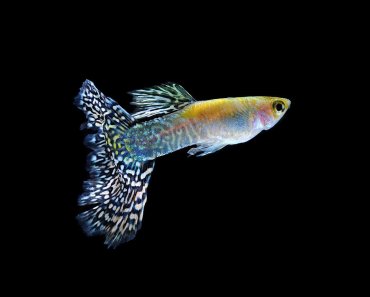A successful resolution to your dog or cat’s skin allergies means tackling the problem from both inside and out.
When we talk about skin allergies in a dog or cat, the main concern is usually what’s making them itch so much. Itching causes the animal to scratch and bite at their skin, which can lead to redness and inflammation, hot spots, hair loss, and secondary infections. The cycle of itching and scratching can spiral out of control and the dog or cat becomes miserable. Relieving an animal’s allergies can be difficult, but a key point is that you need to address the problem from both sides of the skin. In other words, you need to consider your dog or cat’s nutritional and bodily health as well as look at their outside environment (where allergens come from). This two-pronged approach is the most effective way to beat allergies and help your dog or cat feel more comfortable.
A CLOSER LOOK AT ITCHINESS
It doesn’t take much for a reaction to occur in allergic animals. Extreme, intense itching over the whole body can come from the bite of a single flea; one mouthful of a certain food the animal is sensitive to; a very small amount of dust in an otherwise clean-looking house (for a dog or cat allergic to dust mites); or low pollen levels that don’t bother you or other animals.
If only one thing is causing your dog or cat’s itchiness, you might be able to solve the problem by simply removing that trigger from the environment. Broader allergies with multiple causes, however, require the “both sides of the skin” approach.
Fast Fact: Although any dog can develop allergies, the two breeds most likely to have allergies affecting the skin are the Shar Pei and West Highland White Terrier.

FIGURING OUT THE PROBLEM
Trying to pinpoint what’s causing the problem is the first step. Here are some questions to consider:
- Is your dog or cat’s itchiness seasonal? Does it occur mainly when pollen counts are high? If you live in a region where warmer weather lasts longer now, have your animal’s allergies become year-round? Are his eyes red much of the time, in the absence of an eye infection? If your answer to one or more of these is “yes”, then part of the problem, if not all of it, is probably an allergy to plant pollen.
- Is your dog or cat itchiest in front of the tail and around the neck? If so, fleas are probably playing a part.
- Does the itching get worse after eating? Did it increase when you started a new food, or when the dog or cat is given one special treat? These are good hints that a food allergy is at the bottom of the problem.
Fast Fact: Does your animal seem itchier inside the house than out? Does the problem decrease or go away when you take them on vacation with you? If so, they might be allergic to house dust, mold, fungal spores, or cleaning products used in your home.
WHAT TO DO OUTSIDE THE SKIN — ENVIRONMENTAL SOLUTIONS
You don’t have much control over pollen levels, but you can help minimize exposure by keeping your animal indoors as much as possible on dry, windy days when pollen counts are high. After your dog or cat has been outside, rub their coat down with a clean, damp cloth to help remove pollen that might have settled on it. Rinse the cloth afterwards so it doesn’t carry pollen that can fall off when it dries out.
Keep the air in your house as clean as possible. HEPA filters are the best way to do this. Animal guardians who begin using HEPA filters in their homes often notice their own eyes are less irritated. Just doing this can help with pollen, molds, fungal spores, and dust. Another way to limit problems with airborne allergens is to vacuum often, including under the furniture and the cracks near the baseboards.
Get rid of cleaning products made with artificial fragrances. Even natural fragrances can lead to sensitivities. Limit these products, or better yet, go with scent-free, natural cleaning products.
More frequent bathing and flea combing can be helpful in several ways. Bathing will remove any pollens, dust and other allergens from the coat. Shampoo will also help kill fleas, though a natural flea soap will work better — avoid commercial products containing harsh chemicals as they can make the skin problem worse. Do not use a citrus-based shampoo on cats, or one that contains d-limonene. Since heat tends to make itching worse, use cool or lukewarm water. A chamomile tea rinse after the bath is also soothing to the skin. Make sure any hair dryer you use is on the cool setting. Also wash your dog or cat’s beds often.
When the problem is a flea allergy, even if you can’t find fleas on your dog or cat and don’t see them in the house, act as if you have a severe flea problem (because, for your pet, a single flea is a severe flea problem)! One or more flea traps in the house, placed near beds and scratching posts, are a must (you might be surprised how many fleas you catch). You can make your own flea trap with a pan of soapy water and a desk lamp over the pan to keep things warm.
Commercial sticky traps work well in areas where you don’t want water. In the yard, flea nematodes can be helpful, depending on your climate. Inside the house, diatomaceous earth is the longest-lasting natural indoor control for fleas, and is especially effective if you have deep carpets. Do not forget to put some underneath the seat cushions on couches and deep chairs.
WHAT TO DO INSIDE THE SKIN — DIET AND SUPPLEMENTS
A good, balanced, natural diet will make your dog or cat less attractive to fleas. Vitamin B12, given by mouth once or twice a day on a daily basis, works well to repel fleas on some animals, though it doesn’t work for all.
Anything you can do to minimize inflammation in the whole body, not just the skin, helps with itchiness. Omega 3 fatty acids improve skin health and are anti-inflammatory, so they help decrease itching no matter what the cause. Vitamins C and E also decrease inflammation.
Food sensitivities can be harder to control. Be sure there are no artificial flavors, colors, or preservatives in whatever you are feeding your dog or cat, including treats as well as meals. Saliva tests available through your veterinarian can identify food sensitivities in animals.
Some animals develop sensitivities to common pet food ingredients such as beef or chicken. Diets made from novel proteins like bison, rabbit or elk may help.
Sometimes, dogs and cats get so anxious about their itching that it magnifies the problem. A natural calming product such as Rescue Remedy or valerian can make a big difference.
Fast Fact: You might think stopping a particular food or treat will immediately end the itching. However, it can take up to 12 weeks for itching to subside.
If your dog or cat is plagued by skin allergies and incessant itching, it’s important to get to the root of the problem rather than just mask symptoms with medication. Try to find out what your animal’s triggers are, then take steps to minimize or eliminate them. At the same time, make sure your dog or cat is eating a healthy diet and receiving supplements that support skin health and overall wellness. Tackling allergies from both sides of the skin, with the help of a holistic or integrative veterinarian, gives your dog or cat a much better chance at relief.
A graduate of veterinary medicine at the University of California, Davis, Dr. Nancy Scanlan has used nutraceuticals since 1969. She became certified in acupuncture by IVAS in 1987 and followed up with education in chiropractic, Chinese herbs, Western herbs, and homotoxicology. This led to 16 years as the only holistic practitioner in a 7-person practice. After retiring from practice, Dr. Scanlan served as executive director of the AHVMA for 3 years before stepping into her current role as executive director of the AHVM Foundation. Dr. Scanlan is a consultant, author of a text on complementary medicine for veterinary technicians, and writer and lecturer about complementary and alternative veterinary medicine. She is currently enrolled in a masters degree program on integrative cancer treatment at the University of South Florida’s medical school.




























